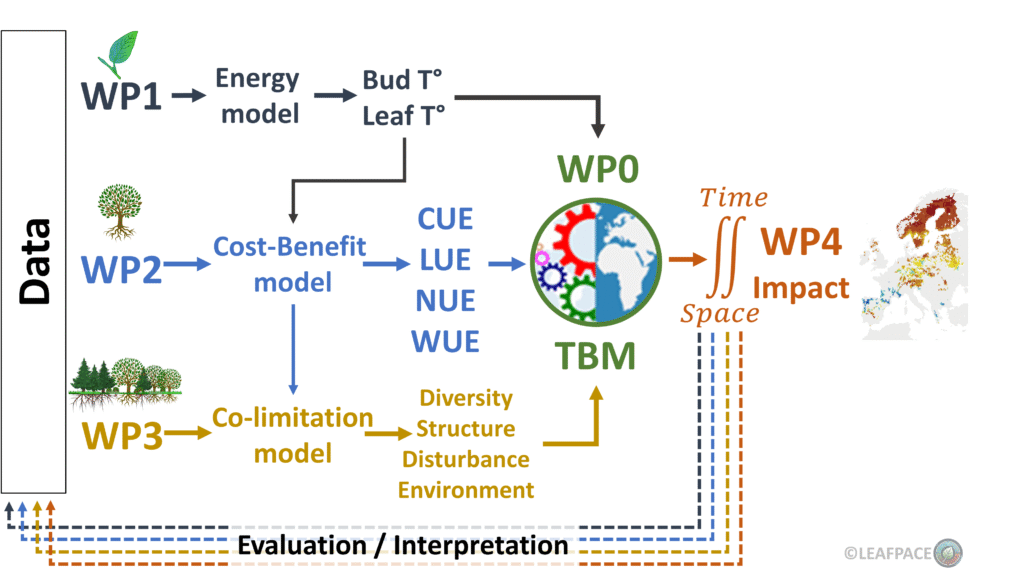Leaf phenology, the study of the seasonal timing and drivers of budburst, leaf unfolding, maturation and senescence, is the starting point of land carbon (C) cycle models, driving C allocation between organs, and thus largely controlling C budget estimates. It is often cited as one of the largest uncertainties in future climate predictions. Despite centuries of research, the environmental control of leaf phenology is still not fully understood. State-of-the-art approaches empirically relate phenophases to macroclimatic air temperature, unable to capture conditions sensed by the tree (microclimate) or species-specific variability. This translates into models unable to accurately reproduce forest response to climate change. Understanding why trees grow or shed their leaves is thus key to assessing the resilience of forests.

The LEAFPACE project aims to improve our understanding of leaf phenology across various scales through an integrative approach centered around tree functioning, incorporating both biophysical and ecophysiological drivers.
This project has been constructed around the central hypothesis (H0) that the response of phenology to environmental drivers results from the optimisation of resource use and processes to local conditions. In order to test H0 it is necessary to understand three main aspects of phenology:
-
- the impact of climate on leaf phenology at the organ level
- the links between phenophases and tree physiology relative to species strategy at the individual level
- the different drivers of phenology across scales, up to ecosystem level
The project is structured into five key work packages (WPs) with associated secondary hypotheses:
-
- WP0: Cost-Benefit Framework – Develop a new phenology module integrating biophysical and ecophysiological drivers of phenology based on optimality principles
- WP1: Biophysical drivers – Explore the biophysical control of leaf phenology based on energy budget models at the organ level
- WP2: Physiological drivers – Explore the trade-offs between species strategy and leaf phenology based on ecophysiological processes at the individual level
- WP3: Community drivers – Disantangle the drivers of leaf phenology at the community level based on the colimitation of forest sensitivity to warming
- WP4: Model implementation in Terrestrial Biosphere Models (TBM) – Explore the impact of leaf phenology on biogeochemical cycles and forest resilience

The main methodology involves the development and testing of a new model that integrates energy budget and cost-benefit frameworks into TBMs. These developments are supported by detailed experiments, field and remote sensing observations to acquire knowledge and collect necessary information for developing and calibrating models.
